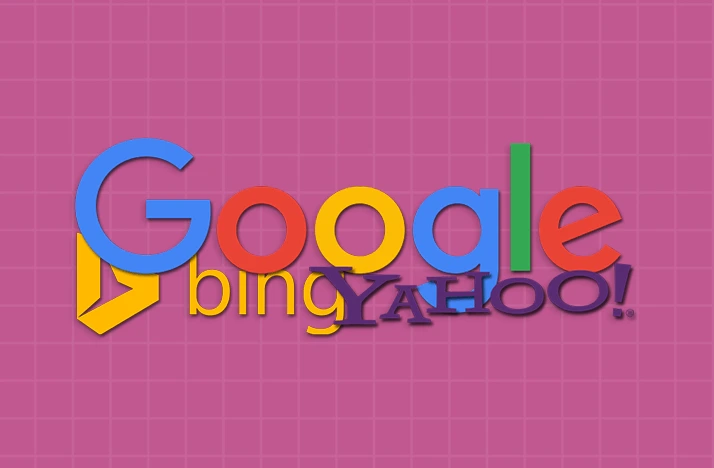Optimizing Bing and Yahoo over Google
When it comes to SEO, Google often steals the spotlight. But did you know that Bing and Yahoo collectively account for nearly 10% of global search engine traffic? While this may seem small compared to Google, optimizing for Bing and Yahoo can unlock new opportunities, especially for niche audiences and demographics that actively use them.
In this blog, we’ll explore why Bing and Yahoo matter, their unique ranking factors, and how to optimize your site to capture traffic beyond Google.
Why Optimize for Bing and Yahoo?
- Alternative Audience Base
Bing and Yahoo are popular among older demographics, professionals, and users in certain regions like the U.S. and Europe. If these groups align with your target market, you’re missing out if you focus solely on Google. - Less Competition
Since fewer businesses optimize for Bing and Yahoo, ranking on these platforms is often easier, offering better visibility with less effort. - Integration with Microsoft Products
Bing powers Microsoft’s ecosystem, including Cortana, Microsoft Edge, and Windows Search. Yahoo also uses Bing’s search algorithm, so optimizing for one improves your performance on both.
How Bing and Yahoo Differ from Google
Before jumping into optimization, it’s important to understand how Bing and Yahoo’s ranking algorithms differ:
- Keyword Match: Bing places a stronger emphasis on exact match keywords in content and metadata.
- Backlink Quality: Bing values authoritative and aged backlinks more than sheer quantity.
- Social Signals: Unlike Google, Bing openly considers social signals (likes, shares, and comments) as a ranking factor.
- Visual Content: Bing is particularly good at indexing multimedia like images and videos, so visual content plays a significant role.
- Local SEO: Bing focuses more on local optimization, especially through its Bing Places for Business feature.
How to Optimize Your Website for Bing and Yahoo
1. Set Up Bing Webmaster Tools
Bing Webmaster Tools is the equivalent of Google Search Console and a must-have for optimizing your website for Bing and Yahoo.
- Sign up at Bing Webmaster Tools.
- Submit your sitemap to ensure Bing indexes your site thoroughly.
- Use the platform to identify crawl errors, keyword opportunities, and performance metrics.
2. Focus on Exact Match Keywords
Unlike Google, which prioritizes semantic search and user intent, Bing still leans heavily on exact match keywords. To optimize:
- Include your target keywords in titles, meta descriptions, headings, and content naturally.
- Avoid keyword stuffing—Bing penalizes spammy practices just like Google.
3. Leverage Rich Media
Bing places a higher emphasis on multimedia content than Google. To make the most of this:
- Optimize images by using descriptive file names and adding alt text with keywords.
- Create and optimize video content since Bing’s algorithm prioritizes video results.
- Use structured data markup to help Bing understand your visual content better.
4. Build High-Quality Backlinks
Bing values backlinks from authoritative and aged domains. To strengthen your backlink profile:
- Focus on earning links from .edu, .gov, or other high-trust websites.
- Avoid spammy link-building tactics, as Bing is strict about penalizing low-quality links.
5. Boost Your Social Media Presence
Social media plays a bigger role in Bing’s ranking algorithm. Enhance your visibility by:
- Actively posting and engaging on platforms like Facebook, Twitter, and LinkedIn.
- Encouraging shares and likes, as these are direct ranking signals on Bing.
6. Optimize for Local Searches
If you’re a local business, optimizing for Bing’s local SEO features is crucial:
- Claim and optimize your profile on Bing Places for Business.
- Add accurate NAP (Name, Address, Phone) details to your site.
- Collect positive reviews, as Bing factors reviews into local rankings.
7. Ensure Mobile-Friendliness
While Google’s mobile-first indexing is widely known, Bing also prioritizes mobile-friendly sites. To optimize:
- Use responsive design to ensure your site works seamlessly across devices.
- Test your site on Bing’s Mobile Friendliness Test Tool available in Bing Webmaster Tools.
8. Improve Site Speed
Bing values fast-loading websites, just like Google. Improve your speed by:
- Compressing images and enabling browser caching.
- Minimizing CSS, JavaScript, and HTML files.
- Using a reliable content delivery network (CDN).
Bonus Tips for Success
- Optimize for Voice Search
Bing powers Microsoft’s virtual assistant, Cortana, making voice search optimization critical. Use natural, conversational keywords and phrases to rank better for voice queries. - Utilize Bing Ads
While this doesn’t directly impact SEO, running Bing Ads can complement your organic strategy by increasing visibility and traffic. - Keep Your Metadata Clean
Bing prefers concise and accurate metadata. Ensure your meta titles and descriptions are clear, keyword-rich, and relevant to your content.
Key Benefits of Optimizing for Bing and Yahoo
- Higher ROI for Effort: With fewer competitors, your efforts on Bing and Yahoo yield quicker results.
- Reaching a Different Audience: Tapping into a segment that relies on Bing or Yahoo gives you a competitive edge.
- Cross-Platform Integration: Optimizing for Bing indirectly helps you perform better on Yahoo and other search engines that use Bing’s algorithm.
Conclusion of this Blog
While Google dominates the search engine market, overlooking Bing and Yahoo means missing out on valuable traffic. By understanding their unique ranking factors and tailoring your SEO strategy accordingly, you can capture a broader audience and drive more targeted traffic to your site.
Start optimizing for Bing and Yahoo today-you might be surprised by the results!
